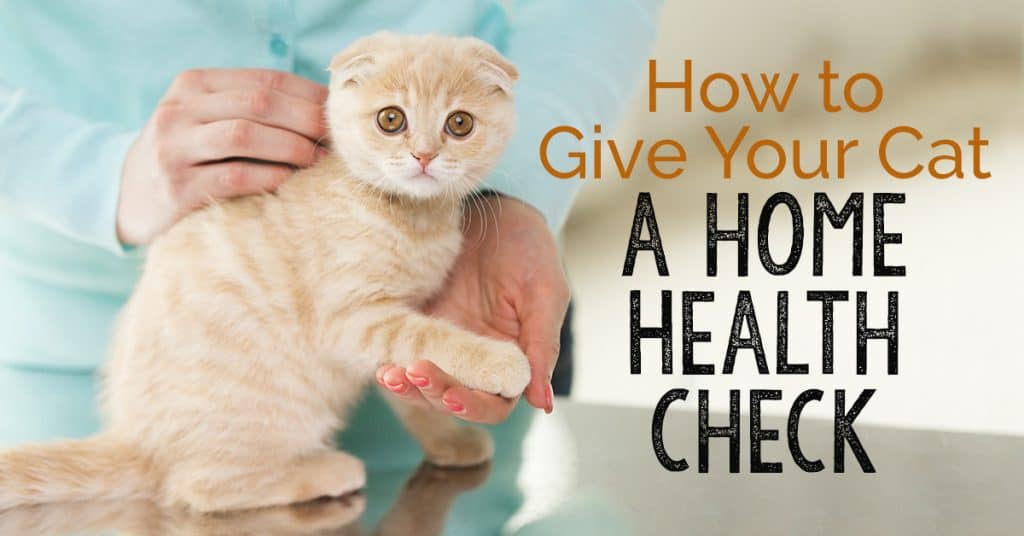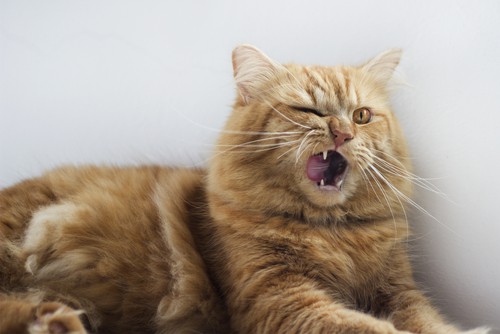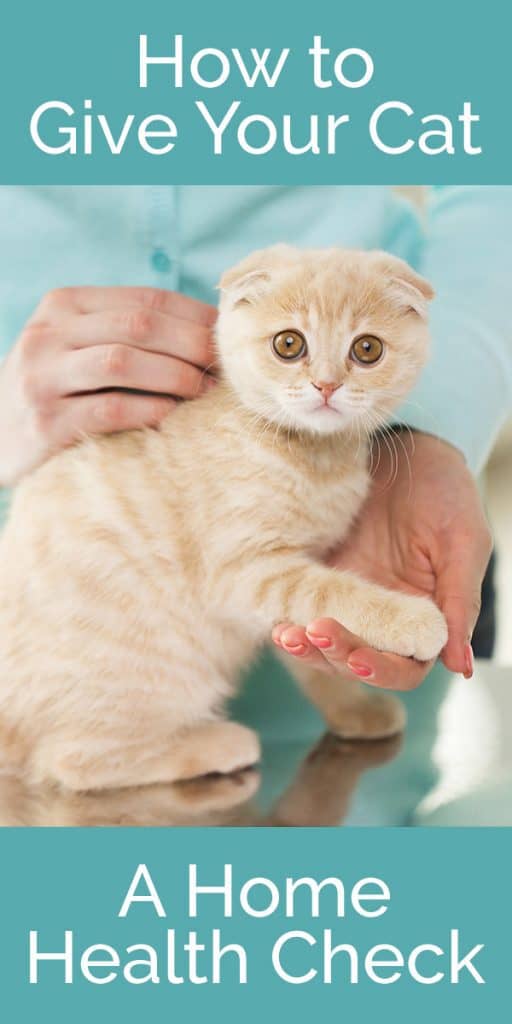From the day you bring your furry new bundle of joy home, you should get to know your cat’s normal behavior, routine, and physical condition. That way you’ll easily be able to detect any signs that he or she is unwell. While it should never replace the advice of your veterinarian, it’s a good idea to give your cat a routine health check at home as another way to stay on top of your cat’s well-being.

Healthy Behavior
Cats are very good at hiding illnesses, but if you get to know what your cat’s “normal” is, you should be able to detect small changes that might indicate something is wrong. So what is considered healthy behavior? Well, your kitty’s expression will be alert and bright, he will run and jump freely, be friendly or calm around people, groom regularly, eat and drink normal amounts, and urinate and defecate regularly.

If your cat is new to the family, it’s normal for him or her to be shy, but that wonderful purr-sonality will emerge in time. Make a note of how your cat typically moves around the house. Is she fast or slow? Notice sounds your cat normally makes. Does he purr a lot or meow and chirp? Watch how she interacts with you and other members of the family, and also how much she eats and drinks. Clean your cat’s litter box often and you’ll become aware of how much and how often your cat “goes.” Once you’ve begun to notice what’s normal behavior for your cat, you’ll easily see when he or she feels unwell.
Routine Home Health Checks for Cats
Get into the habit of doing head-to-tail health checks on your cat every few days. First, run your hands over your cat’s head, body, and legs. Gently feel his belly and check his skin for lumps and bumps. Move your cat’s legs and tail around gently to ensure they move as they should. Her fur should feel smooth and not greasy. Look for lumps, wounds, bald spots, and fleas. When you gently lift the skin between your cat’s shoulder blades, it should quickly return to normal.
Examine your cat’s eyes. They should be bright and alert. The third eyelid should be barely visible. They shouldn’t be squinting or weeping and the pupils should be the same size.

Next, look in your cat’s ears. The inside of his ears should be pink and clean. There shouldn’t be any sores, wounds, discharge, or parasites. Also, give them a whiff and make sure you can’t detect any odor. Then, be sure your cat isn’t holding his ears at a weird angle or twitching excessively.
Check your cat’s teeth and gums by gently lifting his lips and looking inside his mouth. Check the gums for inflammation or bleeding. There should be no odor or bad breath. Press your cat’s gums gently and notice if they go pale but quickly turn pink again when you stop pressing.
Next, check your cat’s claws. Press each paw gently to expose his claws and check them over for any signs of damage. Then check the skin between the toes and the paw pads for any wounds. Your cat’s claws should be barely visible when they retract, so you may notice it’s time for a nail trim.
Detecting a Problem
• A cat that is usually running around the house like a maniac is suddenly lethargic and sleeping all day.
• You notice you’re refilling your kitty’s water bowl twice as often as normal, or your cat has stopped eating.

• You find that you’re not scooping as many clumps from the litter box.
• Your typically quiet cat has started meowing all the time.
• Your well-behaved feline friend has suddenly started having accidents outside of the litter box.

Changes like these are signs that something may be wrong with your cat, and he should be seen by a veterinarian. While cats – even healthy ones – should be seen by a veterinarian once a year, be sure to bring your cat to the vet at the first sign of behavioral or physical changes. The quicker you notice and diagnose illness, the better your cat’s prognosis will be.
Have you ever had a sick cat? How did you first notice he was ill? Tell us in a comment below. And, if you found this article helpful, help us by pinning it!





